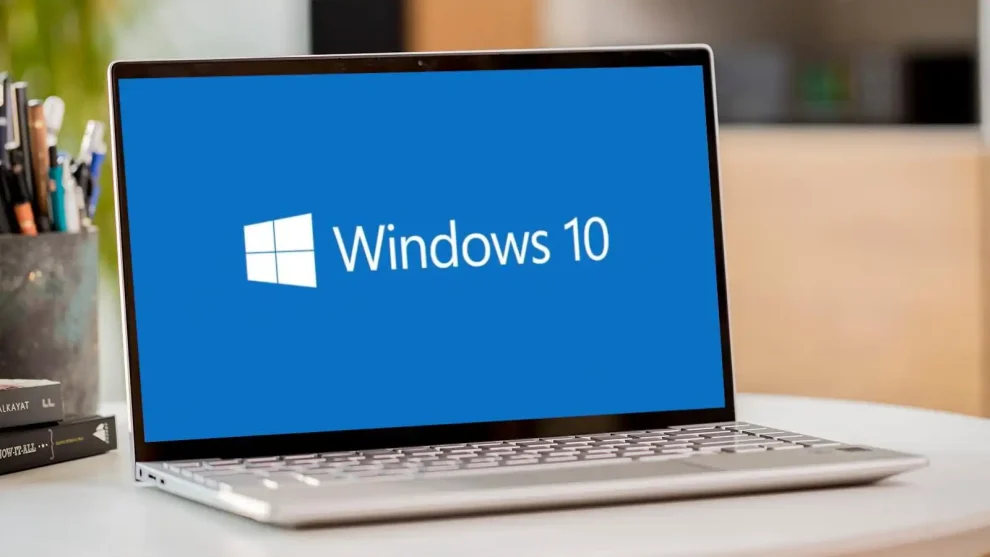A looming Microsoft update deadline threatens to plunge millions of Windows users into a digital dark age of unprecedented vulnerability. As the clock ticks down, experts warn of a potential security nightmare that could dwarf previous cyber crises, leaving countless systems exposed to a new wave of sophisticated attacks.
At the heart of this unfolding crisis is Microsoft’s decision to end support for a critical component of its Windows operating system, a move that will leave millions of PCs without crucial security updates. While Microsoft has long telegraphed this transition, the scale of the potential impact is only now becoming clear as the deadline approaches.
Dr. Elena Rodriguez, a leading cybersecurity researcher at the Digital Frontiers Institute, paints a grim picture of the situation: “What we’re facing is nothing short of a digital doomsday scenario. Millions of systems, many in critical infrastructure and essential services, are about to be left defenseless against an ever-evolving landscape of cyber threats. It’s a ticking time bomb of unprecedented scale in the history of computing.”
To grasp the full magnitude of this looming crisis, it’s crucial to understand the current cybersecurity landscape and the role that regular updates play in protecting systems:
1. Evolving Threats: Cyber attackers constantly develop new techniques to exploit vulnerabilities in operating systems and software.
2. Zero-Day Vulnerabilities: Previously unknown security flaws can be exploited by attackers before developers have a chance to create and distribute patches.
3. Ransomware Epidemic: The past few years have seen a surge in ransomware attacks, with criminals targeting everything from individual users to large corporations and government agencies.
4. Supply Chain Attacks: Sophisticated attackers increasingly target software supply chains, compromising trusted applications to distribute malware.
5. State-Sponsored Hacking: Nation-state actors engage in cyber espionage and sabotage, often targeting critical infrastructure and government systems.
John Smith, a veteran ethical hacker and security consultant, explains the critical role of updates: “Operating system updates are the front line of defense in cybersecurity. They patch known vulnerabilities, improve system stability, and introduce new security features to counter emerging threats. Without these updates, systems become sitting ducks for attackers.”

The numbers associated with this impending security crisis are staggering:
– Affected Systems: Estimates suggest that over 200 million PCs worldwide could be impacted by the end of support.
– Business Impact: Approximately 30% of business computers are thought to be running the soon-to-be-unsupported version of Windows.
– Critical Infrastructure: Thousands of systems in healthcare, energy, and transportation sectors are at risk.
– Global Distribution: The affected systems span across 190 countries, with developing nations particularly vulnerable due to slower technology adoption cycles.
Sarah Chen, an IT systems analyst at Global Tech Solutions, provides context for these numbers: “We’re not just talking about home users or small businesses. Many large corporations, government agencies, and critical infrastructure providers are still running older systems due to compatibility issues with specialized software or hardware. The potential for disruption is enormous.”
At the core of this security nightmare is Microsoft’s decision to end support for Windows 10 version 21H1. This move is part of Microsoft’s broader strategy to push users towards newer versions of the operating system, which offer improved security features and performance enhancements.
Key points about the end of support:
1. Date: Support for Windows 10 version 21H1 will end on December 13, 2025.
2. Implications: After this date, the affected systems will no longer receive security updates, bug fixes, or technical support from Microsoft.
3. Vulnerability Window: Each day past the support end date increases the risk of new, unpatched vulnerabilities being discovered and exploited.
Mark Johnson, a Microsoft certified systems engineer, explains the company’s perspective: “Microsoft can’t indefinitely support old versions of its software. Each supported version requires significant resources to maintain and secure. The company needs to focus on improving newer versions and encouraging users to upgrade for better overall security.”
Despite the clear dangers of running an unsupported operating system, many users and organizations face significant challenges in upgrading:
1. Hardware Limitations: Older PCs may not meet the minimum requirements for newer Windows versions.
2. Software Compatibility: Critical business applications may not function correctly on newer operating systems.
3. Cost: Upgrading hardware and software can be expensive, especially for large organizations or those in developing countries.
4. Complexity: The upgrade process can be time-consuming and complex, particularly for organizations with extensive IT infrastructure.
5. Regulatory Compliance: Some regulated industries have strict change management processes that slow down upgrades.
Dr. Lisa Patel, an IT governance expert, elaborates on these challenges: “For many organizations, upgrading isn’t just a matter of clicking a button. It involves extensive testing, employee training, and sometimes complete overhauls of critical systems. The financial and operational costs can be substantial.”
As the update deadline approaches, cybersecurity experts are painting an alarming picture of the potential consequences:
1. Surge in Cyberattacks: Criminals are likely to target the newly vulnerable systems aggressively, leading to a spike in successful breaches.
2. Data Breaches: Sensitive personal and corporate data on unprotected systems will be at increased risk of theft.
3. Ransomware Epidemic: Experts predict a significant uptick in ransomware attacks targeting vulnerable systems.
4. Critical Infrastructure Risks: Vital services like healthcare, energy, and transportation could face disruptions if critical systems are compromised.
5. Economic Impact: The global economy could suffer billions in losses due to cyber incidents and the costs of emergency mitigation efforts.
Robert Chang, a cybersecurity analyst at the Global Cyber Defense Initiative, warns: “We’re looking at a potential cyber pandemic. Once support ends, it’s not a question of if these systems will be compromised, but when. The domino effect could be catastrophic, with successful attacks on one system potentially leading to widespread network compromises.
Faced with growing concern from the cybersecurity community and its user base, Microsoft has taken several steps to address the looming crisis:
1. Extended Support Options: Microsoft is offering extended support packages for enterprise customers, albeit at a significant cost.
2. Upgrade Assistance Programs: The company has launched initiatives to help users and organizations transition to newer, supported versions of Windows.
3. Enhanced Security Features: Newer Windows versions include advanced security capabilities to incentivize upgrades.
4. Public Awareness Campaigns: Microsoft has increased its efforts to educate users about the risks of running unsupported software.
5. Collaboration with Partners: The company is working with hardware and software vendors to ensure compatibility with newer Windows versions.
A Microsoft spokesperson stated: “We are committed to helping our customers transition to supported versions of Windows. We understand the challenges this transition poses for some users and organizations, and we’re working tirelessly to provide resources and support to ensure a smooth and secure upgrade process.”
The impending Windows security crisis has far-reaching implications for the entire tech industry:
1. Cybersecurity Industry Boom: Security firms are seeing increased demand for products and services to protect vulnerable systems.
2. Hardware Sales Surge: PC manufacturers are experiencing a spike in sales as organizations rush to upgrade hardware.
3. Cloud Migration Acceleration: Some organizations are using this as an opportunity to accelerate their move to cloud-based solutions.
4. Regulatory Scrutiny: Governments and regulatory bodies are considering new mandates for cybersecurity practices and software lifecycle management.
5. Innovation in Compatibility Solutions: Software developers are racing to create solutions that allow legacy applications to run on newer operating systems.
Emma Rodriguez, a technology policy advisor, comments on the broader impact: “This situation is forcing a long-overdue conversation about digital infrastructure resilience. It’s highlighting the need for more sustainable approaches to software lifecycle management and cybersecurity at a societal level.
As the update deadline approaches, experts are offering guidance on how individuals and organizations can navigate this challenging period:
1. Immediate Action: Begin the upgrade process as soon as possible to beat the rush and potential supply chain issues.
2. Risk Assessment: Conduct thorough audits to identify vulnerable systems and prioritize upgrades based on criticality.
3. Segmentation: Isolate systems that can’t be immediately upgraded to minimize potential damage from breaches.
4. Alternative Solutions: Consider virtualization or cloud-based solutions for running legacy applications securely.
5. Enhanced Monitoring: Implement advanced threat detection and response capabilities for at-risk systems.
6. Employee Education: Train staff on cybersecurity best practices to reduce the risk of successful attacks.
7. Incident Response Planning: Develop and test comprehensive incident response plans to mitigate potential breaches quickly.
Dr. James Wong, a cybersecurity strategist, emphasizes the importance of proactive measures: “Waiting until the last minute is not an option. Organizations need to act now to assess their exposure and develop a clear roadmap for securing their digital assets. This isn’t just an IT issue; it’s a business survival issue.
The approaching Microsoft update deadline and the potential security nightmare it heralds represent a watershed moment in the history of cybersecurity. It underscores the critical importance of software lifecycle management and the ever-present need for vigilance in the face of evolving digital threats.
As millions of Windows PCs face the prospect of being left defenseless, the situation serves as a stark reminder of our deep dependence on digital systems and the cascading effects that vulnerabilities in these systems can have on our daily lives, critical infrastructure, and global economy.
The coming months will be crucial as users, organizations, and the tech industry as a whole race against time to mitigate this looming threat. How we collectively respond to this challenge will likely shape cybersecurity practices and digital resilience strategies for years to come.
As the digital doomsday clock ticks down, one thing is clear: the era of taking software updates for granted is over. In our interconnected world, cybersecurity is everyone’s responsibility, and the cost of complacency has never been higher.
















Add Comment